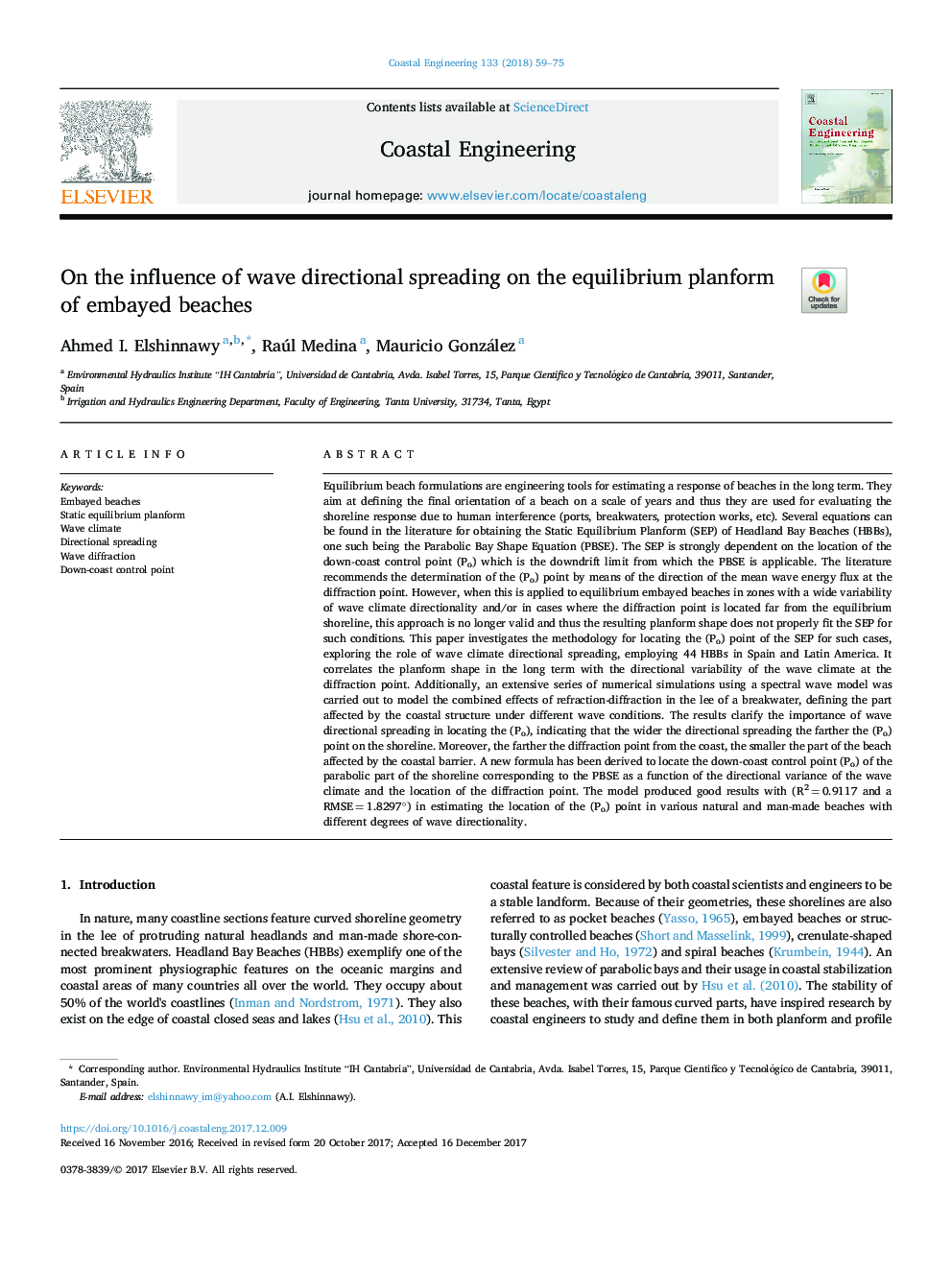| کد مقاله | کد نشریه | سال انتشار | مقاله انگلیسی | نسخه تمام متن |
|---|---|---|---|---|
| 8059570 | 1520321 | 2018 | 17 صفحه PDF | دانلود رایگان |
عنوان انگلیسی مقاله ISI
On the influence of wave directional spreading on the equilibrium planform of embayed beaches
ترجمه فارسی عنوان
در اثر گسترش امواج موج بر روی نقشه های تعادلی سواحل جا افتاده
دانلود مقاله + سفارش ترجمه
دانلود مقاله ISI انگلیسی
رایگان برای ایرانیان
کلمات کلیدی
سواحل فرو ریز، مدل تعادل استاتیک، آب و هوا موج، گسترش جهت، پراش موج، نقطه کنترل پایین ساحل،
موضوعات مرتبط
مهندسی و علوم پایه
سایر رشته های مهندسی
مهندسی دریا (اقیانوس)
چکیده انگلیسی
Equilibrium beach formulations are engineering tools for estimating a response of beaches in the long term. They aim at defining the final orientation of a beach on a scale of years and thus they are used for evaluating the shoreline response due to human interference (ports, breakwaters, protection works, etc). Several equations can be found in the literature for obtaining the Static Equilibrium Planform (SEP) of Headland Bay Beaches (HBBs), one such being the Parabolic Bay Shape Equation (PBSE). The SEP is strongly dependent on the location of the down-coast control point (Po) which is the downdrift limit from which the PBSE is applicable. The literature recommends the determination of the (Po) point by means of the direction of the mean wave energy flux at the diffraction point. However, when this is applied to equilibrium embayed beaches in zones with a wide variability of wave climate directionality and/or in cases where the diffraction point is located far from the equilibrium shoreline, this approach is no longer valid and thus the resulting planform shape does not properly fit the SEP for such conditions. This paper investigates the methodology for locating the (Po) point of the SEP for such cases, exploring the role of wave climate directional spreading, employing 44 HBBs in Spain and Latin America. It correlates the planform shape in the long term with the directional variability of the wave climate at the diffraction point. Additionally, an extensive series of numerical simulations using a spectral wave model was carried out to model the combined effects of refraction-diffraction in the lee of a breakwater, defining the part affected by the coastal structure under different wave conditions. The results clarify the importance of wave directional spreading in locating the (Po), indicating that the wider the directional spreading the farther the (Po) point on the shoreline. Moreover, the farther the diffraction point from the coast, the smaller the part of the beach affected by the coastal barrier. A new formula has been derived to locate the down-coast control point (Po) of the parabolic part of the shoreline corresponding to the PBSE as a function of the directional variance of the wave climate and the location of the diffraction point. The model produced good results with (R2â¯=â¯0.9117 and a RMSEâ¯=â¯1.8297°) in estimating the location of the (Po) point in various natural and man-made beaches with different degrees of wave directionality.
ناشر
Database: Elsevier - ScienceDirect (ساینس دایرکت)
Journal: Coastal Engineering - Volume 133, March 2018, Pages 59-75
Journal: Coastal Engineering - Volume 133, March 2018, Pages 59-75
نویسندگان
Ahmed I. Elshinnawy, Raúl Medina, Mauricio González,
